No.
3.5.2
Base Material Repair, Area
Transplant Method
OUTLINE
This procedure is used to repair mechanical or thermal
damage to circuit board base material. This method is used
when extended areas of base material must be
completely replaced. This method may be used on single
sided, double sided or multilayer circuit boards or
assemblies.
CAUTION
Surface circuits may need to be replaced in the
damaged area. Be sure that the appropriate circuit
diagrams, or photographs reflecting the original
circuits are available so that they may be replaced
after repairing the base board material. Damage to
internal circuits or planes may have to be restored
using surface wires.
TOOLS & MATERIALS
Ball
Mills
Base Board Repair Kit
Base Board Material
Cleaner
Color
Agents
End Mills
Epoxy
Knife
Micro-Drill
System
Microscope
Oven
Precision Drill System
Scraper
Surgical Saw
Tape, Kapton
Wipes
PROCEDURE
- Clean the area
- Mill away the damaged board material using the
Micro-Drill System and ball mill. Remove all
evidence of the damaged material. No fibers of
laminate material should be exposed. At the
surface file the edges to ensure that the opening
is rectangular or uniform in shape. (See Figure
1).
CAUTION
Abrasion operations can generate electrostatic
charges.
- Clean the area.
- Bevel the edge using the Micro-Drill System and
ball mill or using a file. (See Figure 2).
Or
Install an end mill into the chuck of a Precision
Drill System. Set the speed to maximum and machine a
step or lap joint in the edge of the circuit board where
the new base material will be installed. The depth
and width of the step should be approximately 1/2 of
the circuit board thickness. (See Figure 3).
CAUTION
Exercise care to avoid damage to any internal
conductors. If any internal conductors are damaged,
surface wires may be required.
- Cut or machine a piece of replacement base board
material that is the same thickness and type as
the piece removed. The replacement piece must be
precisely the same size and shape of the opening
including the step joint.
- Install an end mill into the chuck of a
Precision Drill Press. Machine a step onto the
entire mating edge of the replacement base
material. The dimensions of the step should match
the size of the step in the circuit board milled
groove. (See Figure 4).
- Where required apply Kapton tape to
protect exposed parts of circuit board bordering the
prepared area.
- Check the fit to be sure the new base material
properly mates with the step in the circuit board.
- Mix the epoxy.
- Coat both the tongue and groove surfaces with
epoxy and fit together. (See Figure 5). Remove
excess epoxy.
- Cure the epoxy per Procedure 2.7 Epoxy Mixing
and Handling.
- After the epoxy has cured remove the High
Temperature Tape.
- If needed scrape off any excess epoxy using a knife or scraper.
NOTE
If needed, apply additional thin coating to seal any
scraped areas.
- Clean the area.
- Complete by drilling holes, slots, etc. or
adding circuitry as required.
- If solder mask replacement or conformal coating
is needed see appropriate procedure.
EVALUATION
- Dimensions of area replaced should be checked to
conform to specifications required.
|
|
|
Solutions Across the Board
TM
|
|
|
|
Product Class: R/W
Skill Level: Expert
Conformance Level: High
Revision: D
Revision Date: Jul 7, 2000
Repair Service Charge
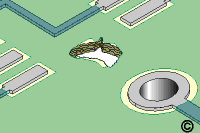
Damaged Base Material

Figure 1: Mill away the damaged base material
using the Micro-Drill
System and ball mill.
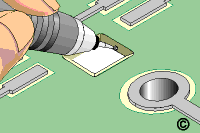
Figure 2: Bevel edge using the
Micro-Drill System or file.

Figure 3: Mill a step into the edge of
the circuit board.
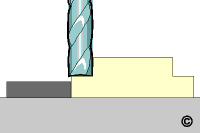
Figure 4: Mill a step onto the edge of the
replacement base material.
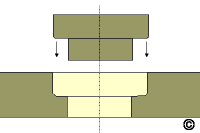
Figure 5: Bond replacement piece in place.
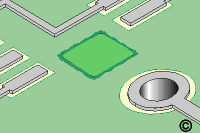
Figure 6: Completed repair.

Figure 7: Micro-Drill
System.
|
Tricks of the Trade
Wow! This is a challenging
repair procedure. Should not to be
attempted by rookies. You may want to send
this one out. Give us a call. See Base
Board Repair for more info. We
recommend Pre-packaged
Epoxy to bond the replacement material
in place. Mix a Color
Agent in with the Epoxy if needed.
You'll need a Precision Drill System and Micro-Drill
if you plan to attempt this one in-house.
|
|
|









